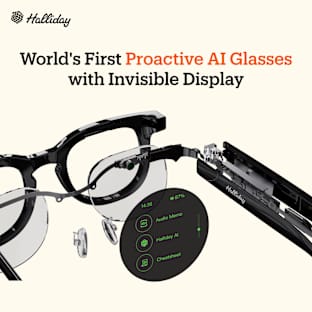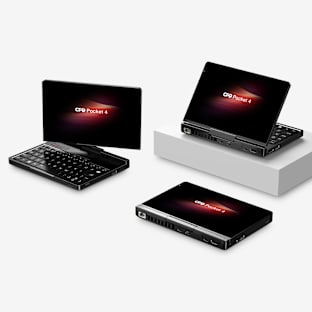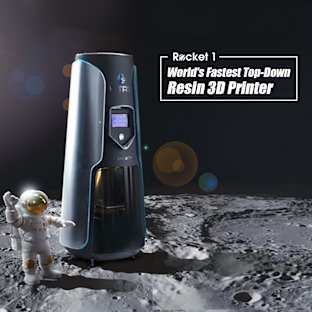![]()
Though we knew about the Biotar's legendary reputation from working on our new Biotar 75, the first time we held our Biotar 58 prototype in our hands, we immediately fell in love. It produces absolute sharpness and a flattering bokeh in any situation. The famous #BiotarBokeh was just breathtaking not the least due to a technical masterpiece using 17 aperture blades.
Immediately it was clear, that would not only bring back the Biotar 75, but also the Biotar 58. Thus that wonderful lens family returns altogether, updated and adapted for the needs of modern photography.
So, we are very proud to present our first working prototype of the Biotar 58mm along with the Biotar 75mm to you.
![]()
![]()
The original Biotar 58/2.0, which was produced in Jena, Germany, is as much of a legend as its big brother, the Biotar 75. It is also a six lens gauss type optical scheme whose first design dates back to 1927 when famous lens designer Willi Merté developed his first Biotar for use in cinematography. Finally it was introduced to the market shortly before the war in Leipzig, Germany, in 1937. Due to the war this early version, the true, historic Biotar 58 was only produced in small numbers. Later versions never achieved quite the same dramatic bokeh as the number of aperture blades was systematicaly reduced for economic reasons.
This first version was bearing a price tag of $239 in 1938 equivalent to about $4111 today.
![]()
![]()
![]()
![]()
The Biotar lenses are probably the most famous and versatile Bokeh lenses on the market.
The Bokeh can be swirly, dreamy or soft or sometimes all at the same time. It can create butterfly-effects. It can look like little clouds emerging in the background. Just see for yourself how versatile it can be.
![]()
![]()
To showcase how nicely the Biotar renders the out-of-focus areas, we have created the hashtag #BiotarBokeh, which we will feed in the upcoming weeks and, of course, we want to encourage you, to join us and showcase your pictures, which you might have produced with an classic version or with the ones you will have received in the not too distant future.
![]()
![]()
During our research and our work with the prototype, we have met quite a number of photographers who have said that the Biotar lenses have enlarged the versatility of their photography. Or let us phrase it differently: Some modern lenses, are pretty much optimized to re-create reality but not so much magic and creative expression. Have you ever taken pictures of a very emotional situation - but the pictures didn't reflect the intrinsic mood of that special situation because the images were too “real”?
Here is where the Biotar magic kicks in. Like no other lens, the Biotar can capture emotions, feelings and moods. But see for yourself what we are talking about.
![]()
![]()
The Biotar 58 is a compact must-have lens for every photographer just as the Biotar 75. With its focal distance of 58mm it is predistined to create rich backgrounds in your images whereas the 75 narrows the view to a larger extent. It also gives you a chance to get close to the action and catch all those moments in fashion, sports, wedding, architecture and even macro heads on. Take a look!
Portrait
![]()
![]()
![]()
Indoor
![]()
![]()
Motion
![]()
Wedding
![]()
![]()
Nature
![]()
![]()
Animals
![]()
![]()
Landscape
![]()
![]()
![]()
Architecture
![]()
![]()
![]()
First, we want to share how we got to this point. What should a revival of such a great lens look like?
As a premise, we absolutely wanted to maintain the optical features of the lens. We wanted to keep its subtleness, its wonderful ability to catch lights and colors and, of course, its legendary center focus and the one and only Biotar bokeh. In other words, we wanted to build a worthy continuation of the famous blueprint while maintaining the grace of the original design. And as the lovely pictures show, we are totally on track.
![]()
![]()
![]()
But, while maintaining its beauty, we also wanted to improve the lens carefully and adapt it to modern times. Our lens design features native mounts for nearly every modern camera system. So, there is no need to fiddle or improvise with adapters. The lens comes with mounts for Canon, Nikon, Sony, Fuji as well as Leica M. So, with whatever camera you have from this huge selection, the lens will fit it right out of the box.
Additionally, we have a little treat for Leica users. Our manual lens design will support Rangefinder coupling.
While we have been researching and examining the Biotar history, we have identified that the very early production models of the years 1937 to 1941 have been most outstanding.
With our lens design we will ressurect the outstanding Biotar tradition in every respect once more. Our lens will be made of pure glass blastered and oxidized aluminum making it resistant to external influences. Additionally, we insert 17 aperture blades with antireflection coating. The amount of 17 just turned out to be perfect to achieve the pictures that one expects from a Biotar with nearly circular lights in the bokeh and the very special spikes in the starbursts of light.
Bottom line is that we are building a magic historical lens for your modern camera equipment.
![]()
![]()
Some of the world’s most renowned lens designers have joined in this project. Fascinated by the idea of returning not only the famous Biotar 75 but also the Biotar 58, the all-star team of optical engineers and manufacturers include:
- Dr. Wolf Dieter Prenzel, the most experienced optical engineer in the field of recreating the optical design of classical lenses,
- Scientific And Engineering Award® winner ("Technology Oscar") André de Winter for the mechanical design and
- one of the most renowned lens manufacturers in the world, Kenko Tokina Inc. for production.
![]()
Optical Designer Dr. Wolf Dieter Prenzel - Mechanical Designer André de Winter
Dr. Wolf Dieter Prenzel studied precision engineering at the Technical University Dresden from 1972 to 1976 and received his Ph.D. in 1987. From 1976 to 1991 he was working at Meyer Optik in Görlitz, Germany in charge of process management and technical development. He has a reputation for being able to carefully resurrect old optical lenses and his passion for optical design is legendary. He has been developing new lenses for the reborn Meyer Optik for the last four years.
André de Winter, certainly one of the most outstanding lens designers of for the famous German camera and lens manufacturer Leica. He started to work at Leitz Canada Ltd. in the design department in 1969, directly under Dr. Mandler and Gerhard Bechmann. He became the major lens designer for most Leica-M (i.e. Noctilux in 1970), and Leica-R lenses. In 1987 he did the opto-mechanical design of 10 Panavision lenses. He transferred to Leica Camera AG in Solms in 1989, where he headed the opto-mechanical lens design department.
He left Leica and returned to Canada in 1999 and worked briefly for Leupold & Stevens in Oregon, USA. He returned to Leica in 2001, upon invitation by Lothar Kölsch, manager of the design department, and Alfred Hengst manager of the Sportsoptic department. In 2007, upon request from Leica CEO Dr. Andreas Kaufmann, André worked for CW-Sonderoptic-Wetzlar, designing the mechanics for the new Summilux-C, (cine lenses) for which he received the Scientific And Engineering Award® of the Academy of Motion Picture Arts and Sciences (“Technology Oscar”).
Tokina represents one of the best manufacturers of lenses in the world. It is our honor to have this company on board so that we can assure that the lenses will be manufactured to the standards of quality that this lens deserves. We do not want to take any risk with a legend!
Kenko Tokina Co., Ltd is a famous Japanese lens maker. The company was established in Tokyo, to be more precise in Shinjuku/Tokyo, in May of 1950 under the name Tokyo Optical Equipment Manufacturing. The first lenses were branded as Tokyo Koki, a shortened version of the phonetic translation into English of the company's name, Tokyo Koki Seisakusho. The company was founded by former Nikon engineers as an OEM manufacturer and at first produced lenses for other companies, such as Vivitar. In the early 1970's, the company began selling lenses under its own brand name, Tokina. In May of 1971 the company changed its name to Tokina Optical Co. Ltd. The company was later acquired by Kenko. The combined company is now known as Kenko Tokina Co., Ltd., and represents all the facets needed for a lens manufacturer under one roof.
The US branches of the companies, Tokina Optical Corporation USA and Kenko Company USA were merged in 1993 to form THK Photo Products, Inc. The letters THK comes from Tokina, Hoya, Kenko. With the latter Tokina was merged in 2011 into Kenko-Tokina. The company employs over 380 people at its mother company and is a supplier of high quality lens manufacturers throughout the world.
![]()
The Biotar 58 and the Biotar 75 will be available with mounts for:
![]()
Technical Specs - Biotar 58 vs. Biotar 75
![]()
MTF Chart - Biotar 58 vs. Biotar 75
![]()
Lens Section - Biotar 58 vs. Biotar 75
![]()
If you want to get your Biotar or support us in any other way just check the Perks of this project. Then you just have to keep a few things in mind but it is really easy.
Please choose your favorite Perk. Make your choices in regard to color, mount or any other choice we offer. After you made your choices you go to the cashier and complete the transaction. You have supported us now successfully. Great!
Next, if you like other Perks you have seen do the same thing again. Choose your Perk, make your choices, go the the cashier and complete the transaction.
You have to do this for every Perk. Thank you for your patience.
![]()
![]()
Any new venture or innovation includes an element of risk. Our project is no different in this respect. Oprema has gathered a strong team to ensure the manufacturing process. We have created a prototype, worked with photographers and business professionals and have carefully evaluated and mitigated all foreseeable risks and challenges, but may face unforeseen challenges. Especially the step from prototype to a pre-series and again from pre-series to serial production is very hard to plan in detail and to cover all possible risks in advance.
Although we all have already successfully designed, created and produced photographic lenses and each of the final lenses will be hand-made by experts in the field, we have not yet started serial production and will only do so once we reach the next stage of our project. Each lens is carefully made and is of high-value and we will take extra precautions to ensure each one is shipped carefully. Our delivery dates, as outlined in the campaign, are based on careful planning and our manufacturing experience with lens projects in the past, but may change due to materials, suppliers and unforeseen events. We will ensure that we keep each of our supporters fully updated. Conversely, it is important that all supporters keep us updated of their address before we ship the final rewards. Any reshipping will require additional payments.
![]()
![]()
![]()
Why Indiegogo?
We appreciate the Indiegogo community, its passion for innovation and its love of technology, art and innovation. It's the perfect community for us to share our vision and project.
When will my Perk be shipped?
The shipping date for each of the Perks is listed next to it. Once the campaign has been funded, we will be in contact to confirm your contact details and to confirm more specific dates. We will be sharing updates to our community and to all supporters as the campaign develops.
What mounts are currently available?
The Biotar 58/f2.0 will be available with mounts for Canon, Fuji X, Nikon, Leica M (rangefinder coupling supported) and Sony FE.
Is the Biotar a manual lens?
Yes, the Biotar is a historic lens. So focussing is manual w/o auto focus.
How much will shipping cost me?
Shipping will cost $20 within the European Union and within the United States, shipping to other areas will cost $50. Shipping will be added automatically when you order your Perk.
Is VAT included in my Perk?
For supporters inside the European Union: Please be aware that VAT is not included and has to be added before delivery of the lenses.
How can I get in touch with you during the campaign and after the campaign has ended?
During and after the campaign you can reach us by writing an E-Mail to indiegogo@oprema-optik.com
Besides that, we will keep you informed and post updates on a regular basis.


























































































